Mine came with outdated firmware (SN03, current version is SN04). You can get the update from Seagate's site by putting in your serial number. The download takes forever because it's close to dial-up speeds. It comes with a cross-platform command-line utility. I booted to a live Linux session to do the update. Instructions are included. Be careful, the commands are case-sensitive.
This drive has TLER (Time-Limited Error Recovery) which is usually intended for RAID setups. I think it's probably fine to leave this enabled, even when used on its own. The default timer appears to be 10 seconds. If the drive can't sort things out in that period, I doubt more time is going to make much of a difference. You can disable (or adjust) it with smartmontools (also included with GSmartControl). However, the setting must be reapplied after every power cycle. Here is the command:
smartctl -l scterc,0,0 /dev/sdX
(Replace sdX with the designation of your drive.)
This drive does not support conventional APM (Advanced Power Management). However, it does have power-saving features. It has multiple modes, including one that parks the heads and another that reduces the spindle speed. These are enabled by default and too aggressive for my tastes. You can use the SeaChest utility to adjust or disable these. Here are the commands for the Windows version:
SeaChest_PowerControl_x64_windows -s
SeaChest_PowerControl_x64_windows -d PDx --showEPCSettings
SeaChest_PowerControl_x64_windows -d PDx --EPCfeature disable
SeaChest_PowerControl_x64_windows -d PDx --powerBalanceFeature info
SeaChest_PowerControl_x64_windows -d PDx --powerBalanceFeature disable
Use the first command to determine the "handle" of your drive. For the subsequent commands, replace the "PDx" with your drive's handle. The second and forth commands display the current status of those features. The third and fifth commands disable the respective features. These settings DO appear to persist through power cycles.
This post can be edited by most users to provide up-to-date information about developments of this thread based on user responses, and user findings. Feel free to add, change or remove information shown here as it becomes available. This includes new coupons, rebates, ideas, thread summary, and similar items.
Once a Thread Wiki is added to a thread, "Create Wiki" button will disappear. If you would like to learn more about Thread Wiki feature, click here.
expiredWeltweit posted Jan 26, 2023 06:10 PM
Item 1 of 5
Item 1 of 5
expiredWeltweit posted Jan 26, 2023 06:10 PM
12TB Seagate Exos X16 3.5" 7200RPM SATA Internal Hard Drive (Mfr. Recertified)
+ Free Shipping$105
Good Deal
Bad Deal
Save
Share

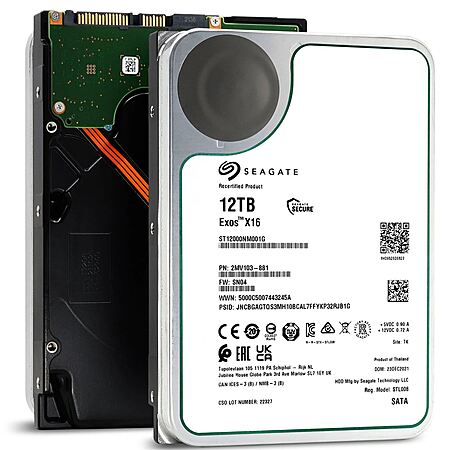
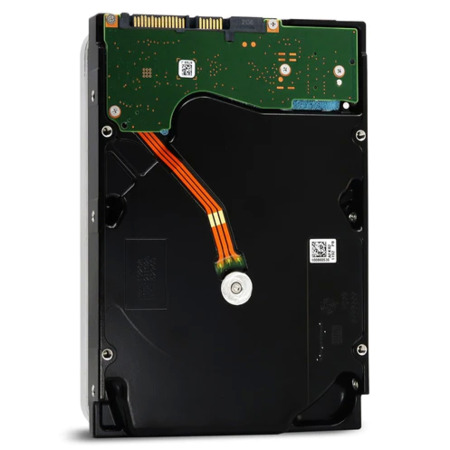
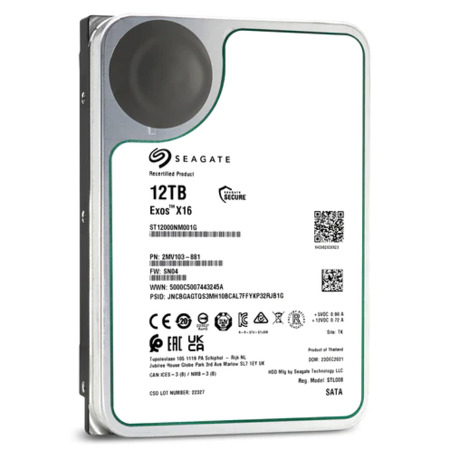
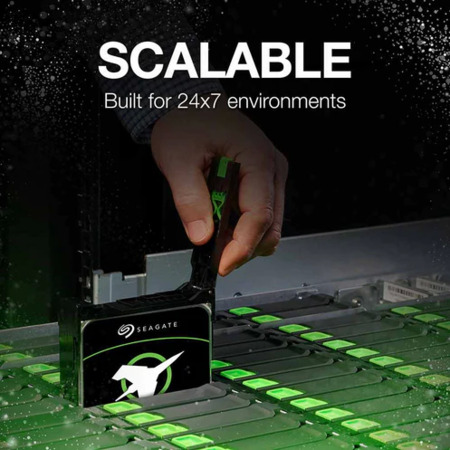
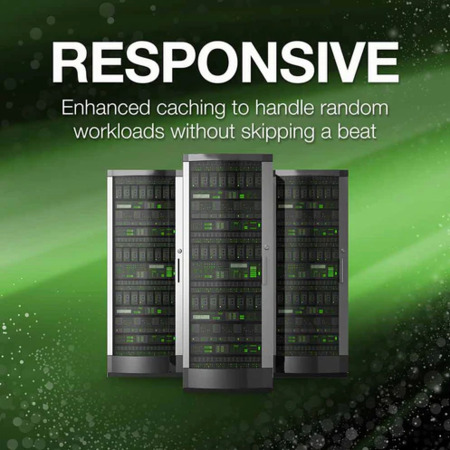

Leave a Comment
Top Comments
The drive works but I have some concerns, as it sometimes seems to take a few tries to calibrate when powering up. The other Exos (an X18) always gets it right on the first try. The drive performs well, with sequential reads/writes around 250MB/s peak. Random 4K reads are about 0.8MB/s, not exactly spectacular. On the other hand, Random 4K writes are over 13MB/s, faster than any other HD I've seen. As far as noise, it seems about the same as the WD/HGST helium drives.
Mine came with outdated firmware. You can get the update from Seagate's site by putting in your serial number. The download takes forever because it's close to dial-up speeds. It comes with a cross-platform command-line utility. I booted to a live Linux session to do the update. Instructions are included. Be careful, the commands are case-sensitive.
This drive has TLER (Time-Limited Error Recovery) which is usually intended for RAID setups. I think it's probably fine to leave this enabled, even when used on its own. The default timer appears to be 10 seconds. If the drive can't sort things out in that period, I doubt more time is going to make much of a difference. You can disable (or adjust) it with smartmontools (also included with GSmartControl). However, the setting must be reapplied after every power cycle. Here is the command:
smartctl -l scterc,0,0 /dev/sdX (Replace sdX with the designation of your drive. Also, this IS case-sensitive.)
This drive does not support conventional APM (Advanced Power Management). However, it does have power-saving features. It has multiple modes, including one that parks the heads and another that reduces the spindle speed. These are enabled by default and too aggressive for my tastes. You can use the SeaChest utility to adjust or disable these. Here are the commands for the Windows version:
SeaChest_PowerControl_x64_windows -s
SeaChest_PowerControl_x64_windows -d PDx --showEPCSettings
SeaChest_PowerControl_x64_windows -d PDx --EPCfeature disable
SeaChest_PowerControl_x64_windows -d PDx --powerBalanceFeature info
SeaChest_PowerControl_x64_windows -d PDx --powerBalanceFeature disable
Use the first command to determine the "handle" of your drive. For the subsequent commands, replace the "PDx" with your drive's handle. The second and forth commands display the current status of those features. The third and fifth commands disable the respective features. These settings DO appear to persist through power cycles.
For anyone wondering, the Exos X18 I got from them had a manufacture date less than six months ago. It had 0 power-on hours and obviously had NOT been tested after the SMART data was reset. Its firmware is up to date and I have not noticed any issue with it yet.
https://serverpartdeals
x18 is slightly faster, but also uses slightly more power. In a home setting in a NAS, the speed benefit won't be realized in any real world situation.
240 Comments
Sign up for a Slickdeals account to remove this ad.
Our community has rated this post as helpful. If you agree, why not thank Weltweit
When I dealt with a lots Dell servers a few years ago, usually all drive replacements under warranty were refurbished.
Our community has rated this post as helpful. If you agree, why not thank the12pac
https://serverpartdeals
https://serverpartdeals.com/produ...hard-drive [serverpartdeals.com]
Sign up for a Slickdeals account to remove this ad.
Our community has rated this post as helpful. If you agree, why not thank the12pac
Before I commit to putting this in my qnap nas, what do you recommend running in terms of qc checking? Any overnight stress testing etc to give you the warm & fuzzies before trusting it?
Our community has rated this post as helpful. If you agree, why not thank fuzzycuffs
x18 is slightly faster, but also uses slightly more power. In a home setting in a NAS, the speed benefit won't be realized in any real world situation.
Our community has rated this post as helpful. If you agree, why not thank pug_ster
When I dealt with a lots Dell servers a few years ago, usually all drive replacements under warranty were refurbished.
I remember that being an issue in the past.
I remember that being an issue in the past.
These have a good place as a secondary backup or if the data is easily replacible
Sign up for a Slickdeals account to remove this ad.
Leave a Comment